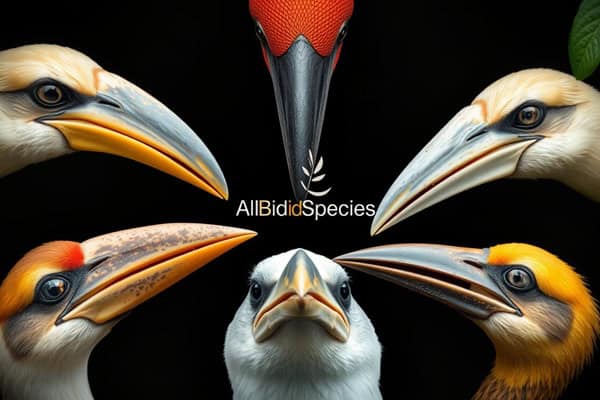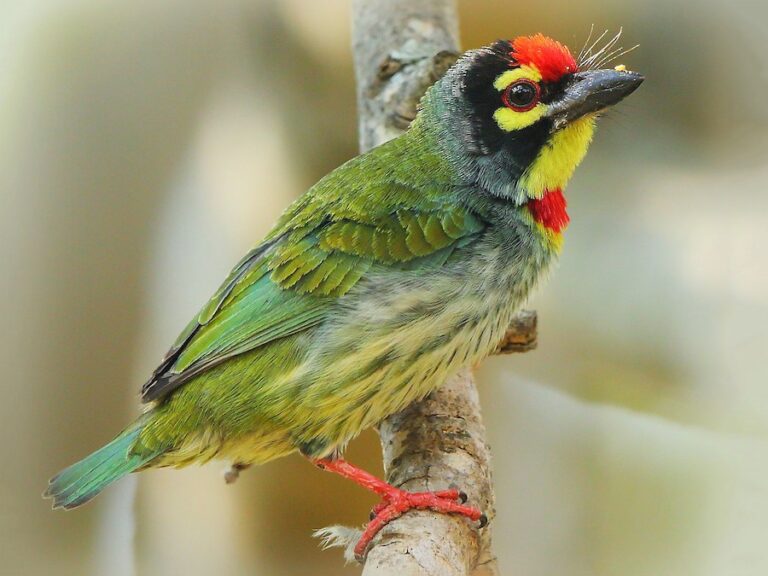6 Bird Beak Types and How Birds Use Them to Eat
Bird Beak Types are crucial for understanding avian feeding habits and survival. After diving into extensive research, I’ve uncovered some fascinating insights. Each beak type serves a unique purpose, revealing the bird’s diet and environment. From cracking seeds to catching insects, the beak tells a story. This exploration sheds light on how these adaptations shape their lives. Ready to discover how beak types influence bird behavior? Let’s dive in!
Introduction to Bird Beaks
Bird beaks, also called bills, are key to birds’ survival. This introduction to bird beaks shows their amazing variety. It talks about the bird beak functions that help birds every day. Each bird has a beak that fits its eating habits and where it lives. This shows why bird beaks are so important in their homes.
Bird beaks come in many shapes and sizes, each for a special job. A hummingbird has a long, thin beak perfect for drinking nectar. A raptor has a hooked beak great for tearing meat. These differences help us tell birds apart and show how important beaks are in their world.
Learning about these special beaks helps us see how complex bird life is. As you learn more, you’ll see that bird beaks are vital. They’re not just for eating; they’re key to surviving.
Understanding the Function of Bird Beaks
Bird beaks show how nature’s engineering is amazing. They come in different shapes and sizes to fit various diets. This shows how bird adaptations help many species live well in their ecological niches.
Each bird type has a special beak for its food needs. For instance, birds that eat seeds have strong, cone-shaped beaks. Hummingbirds have long, thin beaks for getting nectar from flowers. These beaks affect what they eat, how they survive, and their ability to have babies.
Learning about these adaptations tells us about the challenges birds face. When their homes change, birds with the right beaks for their food may grow in number. Those without might struggle more to find food, leading to new ways of eating.
| Beak Type | Function | Example Birds |
|---|---|---|
| Conical | Cracking seeds | Finches, Sparrows |
| Long and Thin | Sipping nectar | Hummingbirds, Sunbirds |
| Hooked | Ripping flesh | Hawks, Eagles |
| Flat and Broad | Filtering food | Flamingos, Ducks |
Different Types of Bird Beak
Bird beaks vary in shape and function, key to their survival. Each type shows unique adaptations for different feeding behaviors. Let’s explore the main types and their roles in feeding birds:
- Drilling Beaks: Perfect for pecking into wood to find insects, like in woodpeckers.
- Catching Insect Beaks: Great for catching insects in the air or from leaves, seen in flycatchers.
- Sipping Nectar Beaks: Long and thin, ideal for reaching into flowers, as in hummingbirds.
- Ripping Beaks: Strong and hooked, used by raptors to tear flesh.
- Cracking Seed Beaks: Short and strong, great for opening seeds, found in finches and sparrows.
- Skimming Beaks: Made for skimming the water to catch small fish, like in skimmers.
Bird beak adaptations show how each bird fits into its ecosystem. They highlight how birds evolved specific beaks to survive. Whether they hunt insects, drink nectar, or eat seeds, these beaks are nature’s clever designs.
Bird Beaks for Drilling
Woodpeckers use their beaks to drill into trees. They find insects, make homes, and talk to other woodpeckers this way. Their beaks show how they’ve adapted to survive and thrive.
How Woodpeckers Adapt
Woodpeckers can take a lot of hits when they peck into hard wood. Their strong neck muscles help them keep going. And their thick skull protects their brains from harm.
This lets them get to food under the bark and make safe homes in trees. It’s how they stay safe and protected.
The Anatomy of a Woodpecker’s Beak
Woodpeckers have beaks with chisel-like tips perfect for drilling. These beaks are strong because they’re made of keratin. They stay sharp even after lots of pecking.
This special design helps them find food and build nests. It’s key to how they live and survive.
Bird Beaks for Catching Insects
Insect-hunting birds have special beaks that help them catch prey. These beaks are made for different hunting ways. They show how birds catch insects with great skill.
Insect-Hunting Techniques
Birds have many ways to catch insects. You can see these methods:
- Gleaning: Birds pick insects from leaves or bark. Warblers use their thin beaks to get insects from leaves.
- Sallying: Flycatchers sit high and jump out to catch insects in the air. They have quick moves and sharp eyes for this.
- Hawking: Purple martins catch flying insects with their wide, flat beaks while flying. They are fast and agile.
Examples of Birds with Insect-Catching Beaks
Some birds have beaks made just for catching insects. For instance:
| Bird Species | Beak Type | Hunting Technique |
|---|---|---|
| Warbler | Slender | Gleaning |
| Flycatcher | Pointed | Sallying |
| Purple Martin | Wide, Flattened | Hawking |
These birds show how they adapt to their world with their beaks. Each beak type is special for catching insects. They help the birds survive.
Bird Beak types for Sipping Nectar
Bird beaks help many species get the food they need, especially nectar-feeding birds. These beaks are long and thin. They let birds like hummingbirds get to the sweet food in flowers. Hummingbirds have special beaks that help them feed while they hover.
Hummingbirds and flowers work together well. When birds eat, they move pollen from one flower to another. This helps the plants make more seeds. This shows how important hummingbirds are to our world.
- Hummingbird Beaks: Adapted for extraordinary precision and access.
- Nectar Feeding: Vital for sustaining energy levels during their active lifestyle.
- Flower Shape Influence: Certain flowers evolve shapes that cater specifically to the beaks of these birds.
Bird Beaks for Ripping
Raptors like eagles and hawks have special beaks for tearing their food. These beaks are key to their survival. They show how these birds hunt and what they eat.
Characteristics of Raptors
Raptors have sharp, hooked beaks for gripping and tearing. Their beaks are strong and muscular, perfect for hunting. They also have great eyesight and powerful talons for catching and holding prey.
Predatory Birds and Their Diets
These birds eat small mammals, birds, and sometimes reptiles. Their beaks help them tear apart their food. This lets them get the most nutrition from their prey. Their diets include:
- Rodents
- Fish
- Smaller birds
- Insects
Raptors have special traits that help them survive and find food in different places.
Bird Beaks for Cracking Seeds
Many birds eat seeds thanks to special beaks that help them crack hard shells. Cardinals and grosbeaks are great examples. They have strong, cone-shaped beaks perfect for getting to the seed inside. Let’s look at these amazing birds and how their beaks work.
Seed-Eating Bird Examples
- Cardinals: These birds are known for their bright red feathers. They have strong beaks for easily cracking seeds.
- Grosbeaks: Grosbeaks have big, cone-shaped beaks. They’re great at opening big seeds like sunflower and thistle.
- Finches: Finches have beaks that change shape for different seeds. This shows how they can eat many types of seeds.
The Mechanics of Seed Cracking
Birds crack seeds with special beaks. Here’s a table that shows how different birds and their beaks work:
| Bird Species | Beak Shape | Seed Type Preferred | Mechanical Adaptation |
|---|---|---|---|
| Cardinals | Cone-shaped | Various seeds | High pressure on seeds for cracking |
| Grosbeaks | Thick and stout | Sunflower, thistle | Powerful leverage while cracking |
| Finches | Variable | Small seeds | Quick opening & closing for rapid feeding |
These special beaks help birds get seeds from their food. They use these beaks in smart ways to eat seeds well.
Bird Beaks for Skimming
Skimming birds like the black skimmer have cool ways to find food. They use their beaks to catch fish in the water. This shows how bird beaks have changed over time to help them hunt better.
The black skimmer’s beak is special for its job. The lower part is longer, letting it skim the water easily. This helps it catch fish right under the surface. Such beaks show how nature designs tools for survival.
Learning about these feeding strategies tells us how birds live in their world. Bird beaks for skimming show the amazing variety in nature. Skimming birds use their beaks to get food, showing how important beak shapes are for eating in water.
| Feature | Details |
|---|---|
| Beak Shape | Longer lower mandible for effective skimming |
| Feeding Method | Drag beak through water to catch fish |
| Habitat | Coastal regions and shallow waters |
| Prey Type | Small fish and aquatic invertebrates |
These traits help the black skimmer do well in its home. Each way of eating shows a deep link between species and their places. It’s amazing to see how nature works.
What Are Bird Beaks Made Of?
Bird beaks are mostly made of keratin, a protein found in human nails too. This shows how strong and protective they are. The keratin helps keep the bone safe inside.
The structure of bird beaks helps them eat in different ways. Over time, they can change shape or get worn out. Birds keep their beaks sharp by constantly renewing them. This keeps them ready for eating and cleaning.
Here’s how the structure and composition of bird beaks help them work well:
| Feature | Description |
|---|---|
| Keratin Layer | Protects the bone and maintains beak integrity. |
| Hardness | Essential for cracking seeds or probing for insects. |
| Shape Variability | Different shapes adapted to specific diets. |
| Growth Rate | Continuous growth allows for self-sharpening. |
Bird Beaks: Adaptation and Survival
Types of Birds have amazing bird beak adaptations that have changed a lot over time. These changes are because of things like food and climate. By looking at these evolutionary changes in bird beaks, we learn how birds have adapted to live in their places.
Darwin’s finches are a great example. They have different beak shapes for different foods. When food changed, their beaks changed too. This shows how birds adjust to their environment to survive.
Looking at different bird species, we see how adaptable they are. Each one has found its own way to live, thanks to its beak. This shows the amazing balance in nature, with beaks being key to survival.
Read More🐦Related Articles:
- Hawks in Mississippi
- Birds of Prey in Pennsylvania
- Eagles in Russia
- Red-Tailed Hawk: A Majestic Raptor
- Hawks with White Heads
Conclusion
Types of Bird beak is truly amazing. They come in many shapes and sizes, each one helping the bird survive and eat. From hummingbirds that drink nectar to raptors with strong, curved beaks, each type is vital.
Studying bird beaks is more than just interesting. It helps us understand how birds live and their role in nature. By seeing how birds use their beaks, we learn about their homes, actions, and importance in ecosystems.
This knowledge helps us protect nature and its creatures. It makes us see the beauty and strength of the natural world. By learning about bird adaptations, we help protect the places they live.







